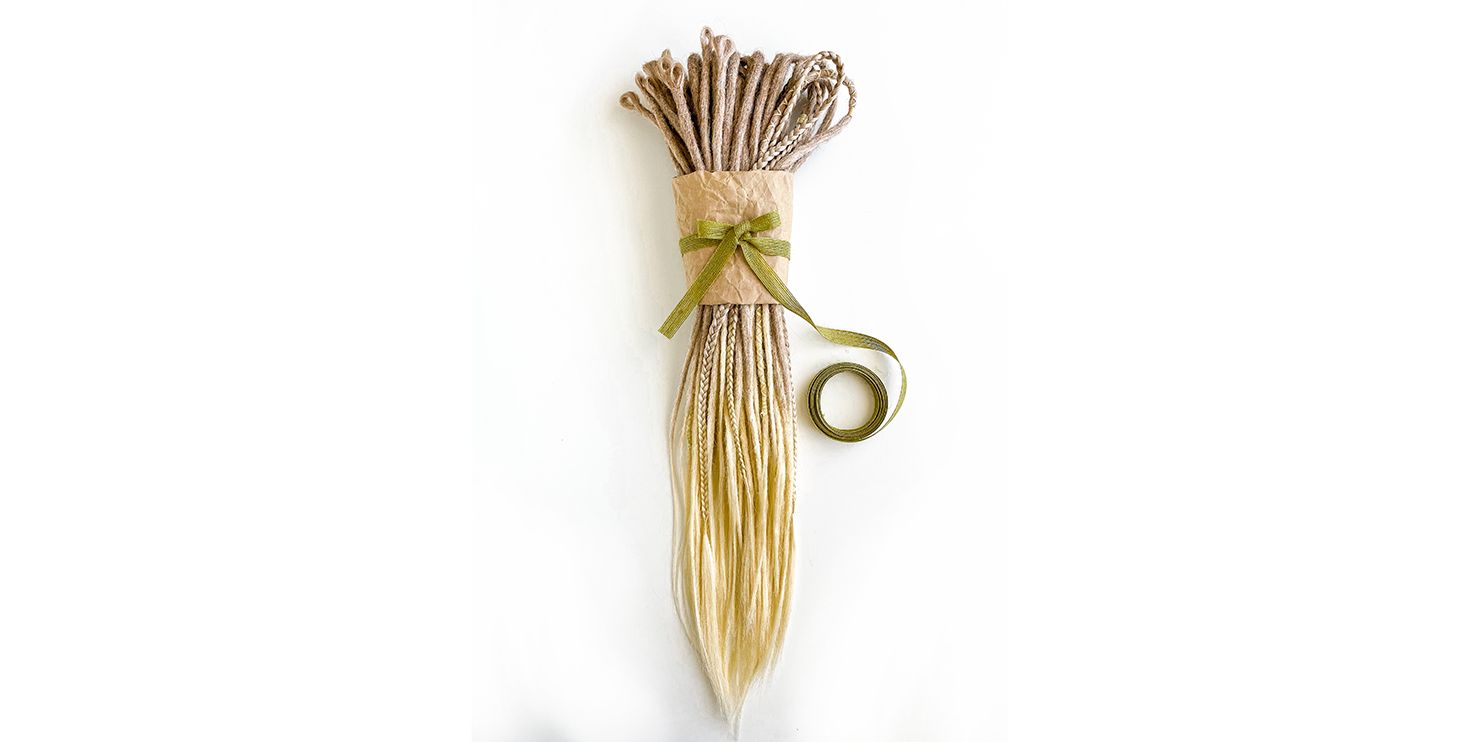All synthetic dreadlocks can be divided into two categories according to the type of bases: “double-ended” (d.e.) (when one dreadlock base has two ends) and “single-ended” (s.e.) – dreadlocks with one end respectively. Our answers to the following questions will help you determine which of the two types of braiding is right for you:
Super volume or more natural look?
D.e. dreadlocks due to the doubled number of ends look much more voluminous than s.e. dreadlocks. It’s possible to choose and adjust the volume. Dreadlocks can also be combined depending on the desired braiding result – for example, if you want to make a tail that is not too thick, but at the same time maintain a good volume, then you can weave d.e. dreadlocks on the crown and s.e. ones – on the back of the head and bangs.
Sensitivity of the scalp and the structure of your hair.
Since d.e. dreadlocks have more volume, it is logical that more kanekalon is used to make them. Consequently, compared to s.e. dreadlocks, the weight of the set doubles. Of course, modern techniques for creating temporary dreadlocks allow you to make even the most voluminous and long sets almost weightless, but the sensitivity of the scalp varies in a fairly wide range. If your head gets tired of even a regular braid or hat, it is wise to opt for a smaller volume of dreadlocks. It’s the same with your hair structure: if your hair is thin, brittle and weak, it’s better to opt for s.e. dreadlocks, or combine d.e. and s.e. and distribute them based on your hair structure in different parts of your head.
If you can’t determine yourself which type of synthetic dreadlocks is right for you, you can always ask all your questions to the master. A detailed consultation is the first step on the way to easy braiding and pleasant wearing without losses and misunderstandings.




